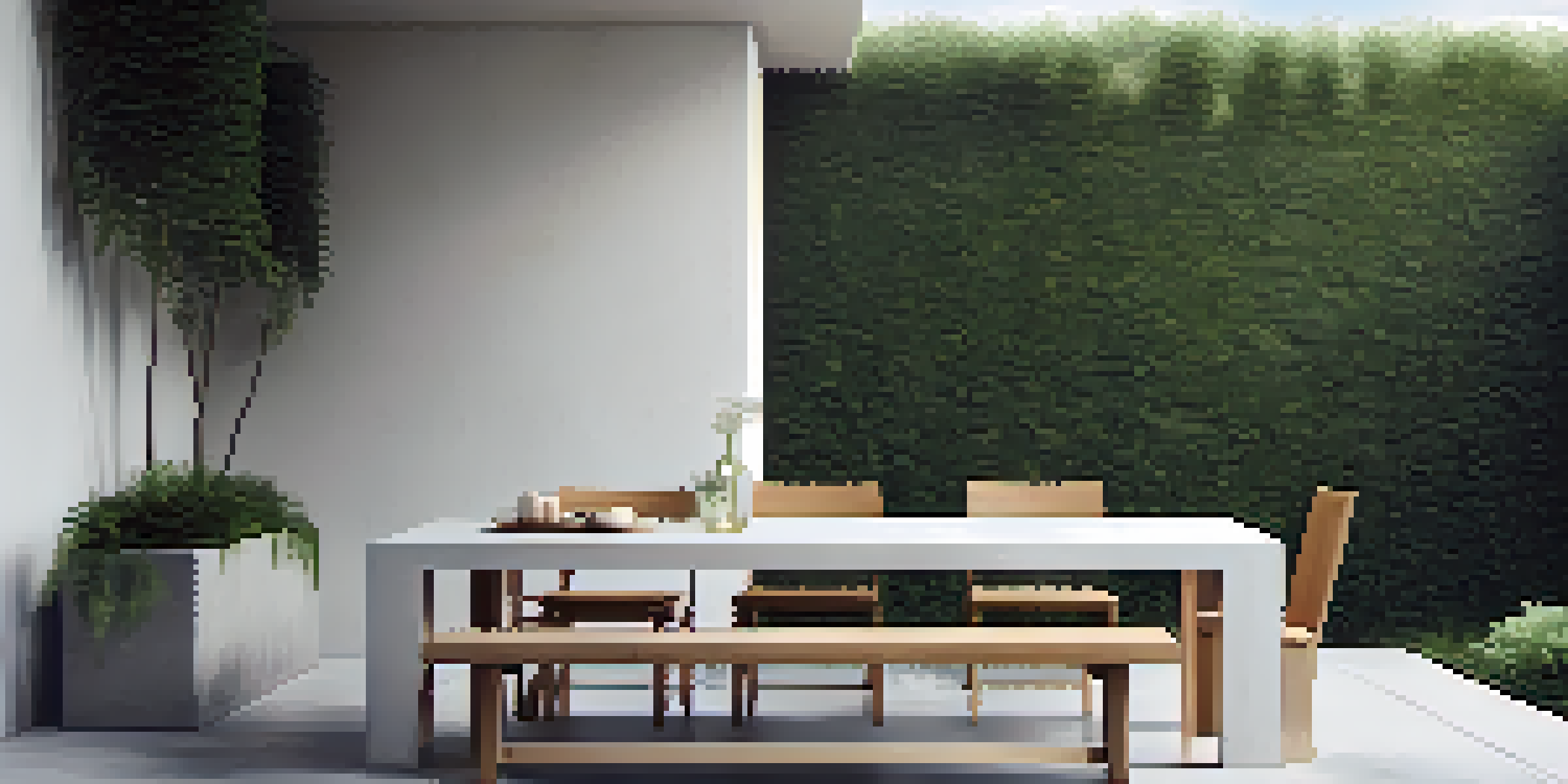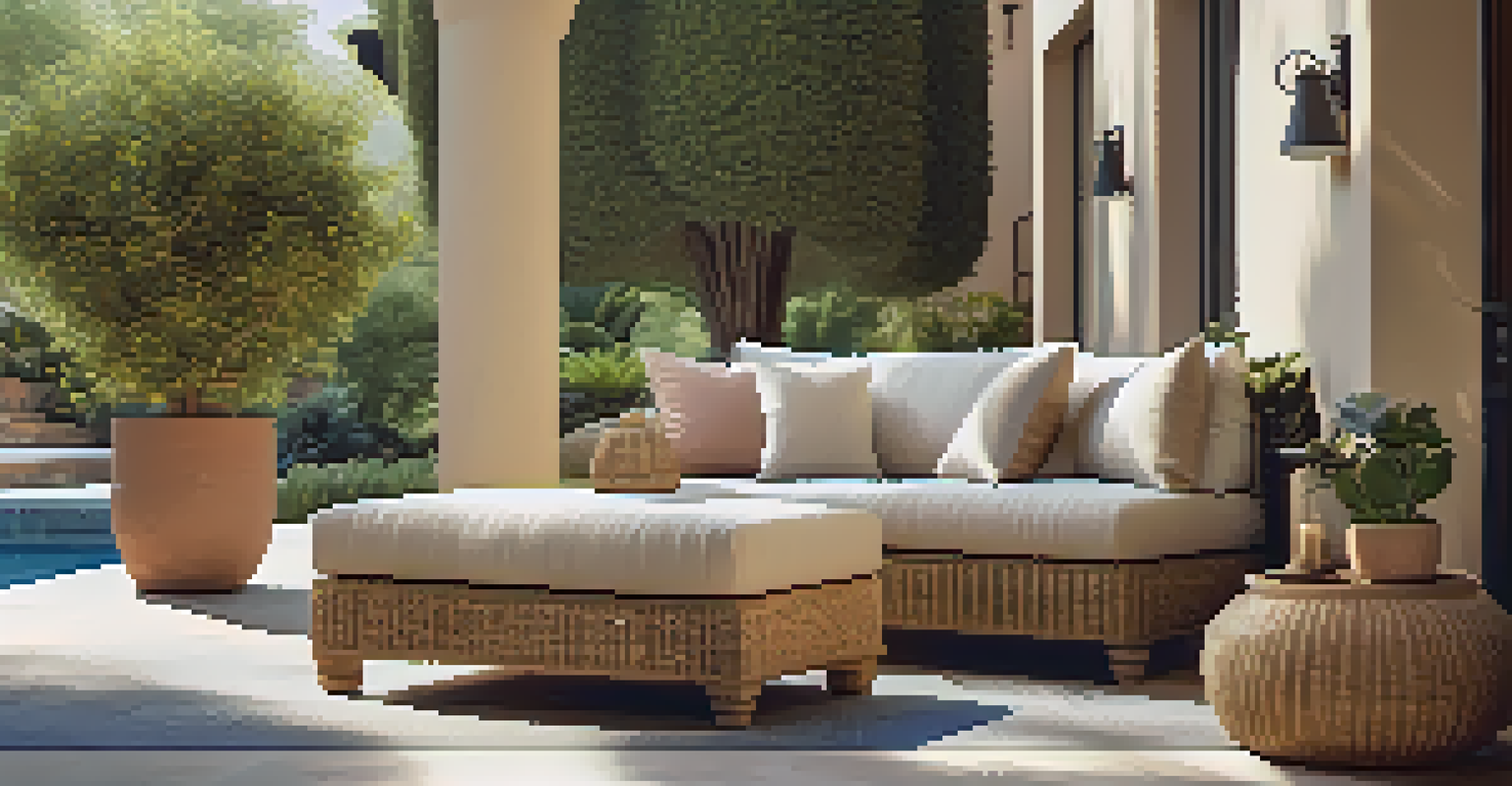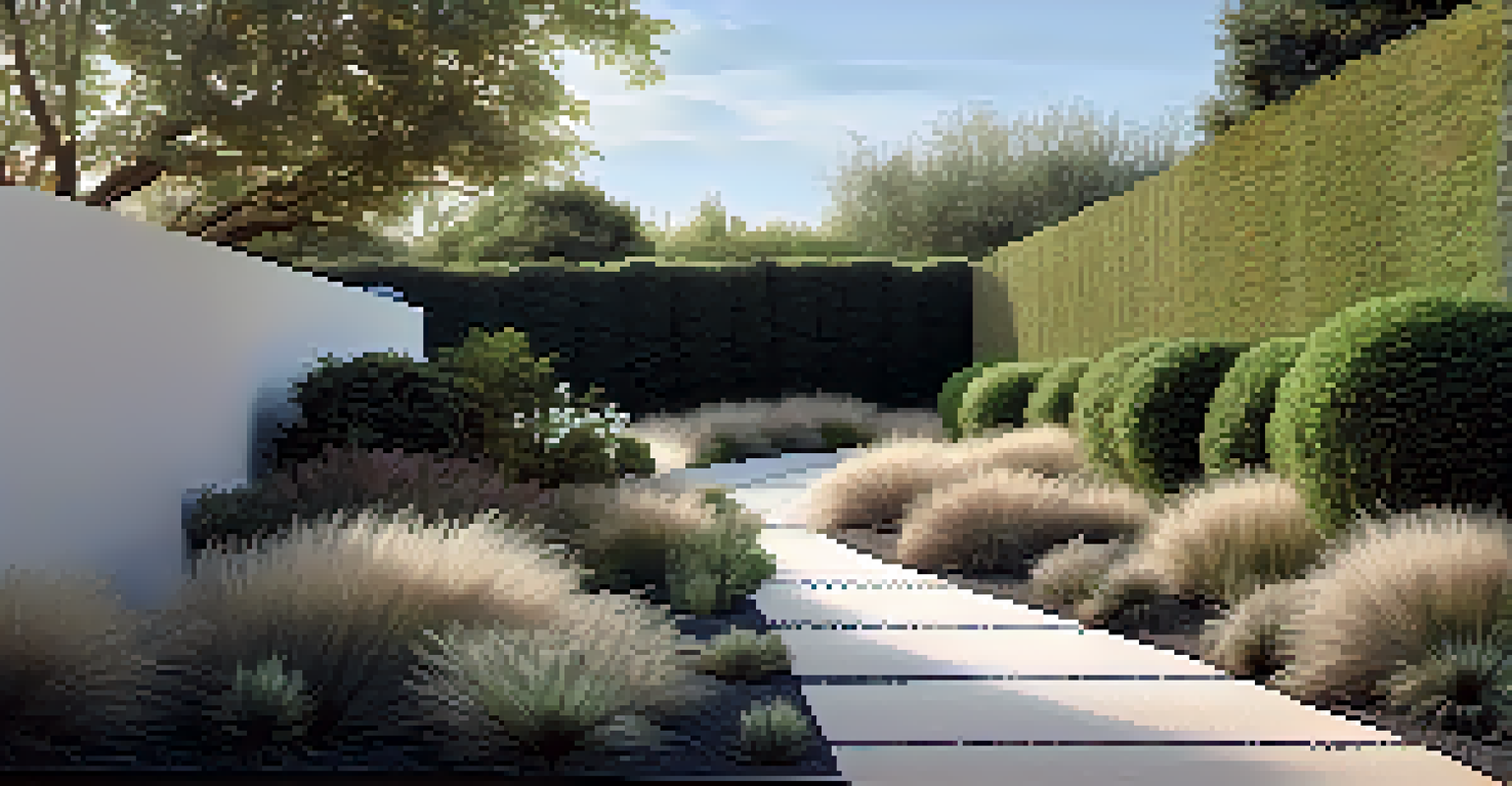Contemporary Outdoor Spaces: Minimalist Design Trends

Understanding Minimalism in Outdoor Design
Minimalism is all about simplicity, focusing on the essentials. In outdoor spaces, this design philosophy embraces clean lines, uncluttered areas, and a limited color palette. The aim is to create environments that feel open and airy, allowing nature to take center stage.
Simplicity is the ultimate sophistication.
When we think of minimalist outdoor design, we often picture sleek furniture and well-defined spaces. This approach encourages homeowners to strip away excess and focus on what truly matters—functionality and beauty. Imagine a deck with just a few elegant chairs and a simple table, surrounded by lush greenery.
By prioritizing simplicity, minimalist designs can reduce maintenance and enhance enjoyment. The less clutter there is, the easier it is to appreciate the tranquility of your surroundings. This philosophy invites you to create a personal oasis that is both inviting and serene.
Key Elements of Minimalist Outdoor Spaces
Key elements of minimalist outdoor spaces include furniture, materials, and landscaping that work in harmony. Think of natural materials like wood and stone that not only blend with the environment but also add a touch of elegance. These materials often age beautifully, enhancing the overall aesthetic over time.

Another essential aspect is the use of neutral colors, which help create a calm atmosphere. Shades of white, gray, and beige can be combined with green plants to maintain a fresh and uncluttered look. For instance, a white concrete patio paired with rich green foliage can create a striking contrast that pleases the eye.
Embrace Simplicity in Design
Minimalism focuses on clean lines and essential elements, allowing nature to take center stage in outdoor spaces.
Finally, incorporating functional features like built-in seating or fire pits can enhance usability without overwhelming the design. These elements can serve as focal points while remaining understated, perfectly embodying the minimalist ethos.
The Role of Nature in Minimalist Design
Nature plays a pivotal role in minimalist outdoor spaces, often serving as the main attraction. Large windows, open layouts, and unobstructed views can seamlessly connect indoor and outdoor areas. This integration allows the beauty of nature to enhance the overall ambiance and design.
The less you have, the less you have to worry about.
Landscaping in minimalist design is typically low-maintenance and thoughtfully curated. Native plants, gravel paths, and strategically placed trees not only create a stunning visual impact but also promote sustainability. By choosing plants that thrive in your local climate, you can create a flourishing space that requires less upkeep.
Additionally, minimalist design encourages the inclusion of natural elements like water features or stone walls. These additions can bring a sense of tranquility and balance, making your outdoor space a true retreat. It's all about celebrating nature while keeping the design simple and elegant.
Furniture Choices for Minimalist Outdoor Living
Selecting the right furniture is crucial for achieving a minimalist outdoor aesthetic. Opt for pieces that are streamlined and functional, such as simple lounge chairs or a sleek dining table. The goal is to create a cohesive look without overwhelming the space with bulky items.
Durability is key when choosing outdoor furniture, as it needs to withstand the elements. Materials like aluminum, teak, and weather-resistant wicker are great options that also align with minimalist principles. These choices ensure that your outdoor space remains stylish and functional year-round.
Select Functional Furniture
Opt for streamlined, durable furniture pieces that complement the minimalist aesthetic without overwhelming the space.
Remember, fewer pieces can often make a bigger impact. A single statement piece, like a beautifully crafted bench, can serve as a focal point in an otherwise simple setting. This intentional approach to furniture selection embodies the minimalist philosophy of less is more.
Color Palettes in Minimalist Outdoor Spaces
A minimalist color palette typically revolves around neutral tones, creating a calm and serene outdoor environment. Whites, grays, and earth tones are common choices that allow nature's vibrant colors to shine through. This subtle approach can lead to a more cohesive and sophisticated look.
Adding accents of color can be done tastefully by incorporating plants or decorative elements. For example, a pop of bright flowers in an otherwise neutral setting can create visual interest without overwhelming the space. This technique allows for personal expression while maintaining the minimalist theme.
Moreover, the use of monochromatic schemes can create a striking yet simple aesthetic. Imagine an all-white patio adorned with various shades of green from surrounding plants—this harmonious blend can evoke a sense of peace and tranquility, which is the essence of minimalist design.
Lighting Solutions for Minimalist Outdoor Areas
Lighting is a crucial yet often overlooked element in minimalist outdoor spaces. Subtle, well-placed lighting can enhance the ambiance without drawing attention away from the beauty of the surroundings. Think of integrated LED strips along pathways or soft-glow lanterns that provide a gentle illumination.
When choosing lighting fixtures, opt for designs that are sleek and unobtrusive. Simple pendant lights or wall-mounted fixtures can provide necessary light while maintaining the overall aesthetic. The key is to ensure that the fixtures blend seamlessly into the environment.
Create Distinct Outdoor Zones
Defining areas for different activities using simple borders enhances functionality while maintaining an open, minimalist feel.
Additionally, natural lighting plays a significant role in outdoor spaces. Emphasizing sunlight through open layouts or minimal barriers can create a warm and inviting atmosphere. This approach not only enhances the beauty of your space but also connects you with nature.
Creating Zones in Minimalist Outdoor Spaces
Even in minimalist design, creating distinct zones can enhance functionality and flow. Consider defining areas for dining, lounging, and gardening, using simple borders like low hedges or gravel paths. This strategy allows for a clear organization without sacrificing the minimalist aesthetic.
Using furniture to delineate spaces is another effective approach. A strategically placed outdoor sofa can create a cozy seating area, while a dining table can define an eating space. This method fosters a natural flow from one zone to another, making the outdoor experience more enjoyable.

Remember, the goal is to keep these zones open and inviting. Avoid over-furnishing or adding too many elements that can make the space feel cramped. Emphasizing the openness of each area will help maintain the minimalist ethos while providing functional spaces.